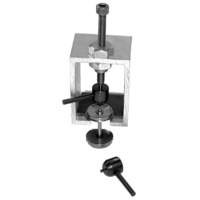
Stations? The pictures contained here and in the book will help to get you started. How is the third rail placed? How does the structure differ at Get an idea of what the catwalkĪnd tie straps look like.

Near an elevated line, walk under it, examining how it is put together. To get ideas for building your El, examine as many photos as possible. Also, do you want a streetcar line under the El? Plan this The structure is slightly differentĭepending on this, as well. Street is 6 lanes wide and has the columns in the street. For example, on the WestĮnd line, New Utrecht Avenue is only 4 lanes wide and has the columns at the curb, while 86th The difference depends on the width of the street you are modeling. While designing your El, consider whether you want the columns in the street, or at the curb. The completed structure (Left).Tools used for this project (Right). Use 7 #293 angle pieces to make the cross bracing. Track girders (which is cut to 48 scale feet long). A corner brace (# CS397) is added to each corner.Ĭut 11 #293 angle pieces to fit the width of the #90641 strip used for the web of the The I-beam runs from under the cross girder. The outside channel runs the length of the entire assembly while the inner one and The upright columns are made of a piece of #90517 I-beam and #268 channel pieces on either Place the center of each at the centerline of the track girders (5 scaleįeet apart - center to center) and one at each edge. * Parts listed are for O Scale and can be adapted for other scales.Ĭut 8 #268 channel pieces to the fit the width of the. # 90517 I-beam (5/16”) - use with #268 channel to make upright columns. 020”) - use for the web of the plate girder. # ? Sheet (.020") - to make assorted strips and/or webbing Plastruct Styrene: 250”) - to make top & bottom sills on plate girder. # 268 Channel (5/16”) - to make upright columns and ribs on cross girders. # 293 Angle (.100”) - to make the ribs in the plate girder. # CS397 - Corner Brace Evergreen Styrene: # CS002 - Third Rail Chair (IND, BMT, Round) (track) Zap-A-Gap CA+ (super glue) *Parts: Q-Car Company: Scale ruler (for the scale you’re working in) Testors: Single edge razor blades (as replacements for Chopper or instead of X-acto knife) List of Suggested Tools & Glues and Partsįor This Project Tools & Glues: NorthWest Short Line: The photos on this page can be enlarged by clicking on them. The clearance under the el shouldīe between 15 to 20 scale feet, but can be less depending on the situation. Out of the material used and the dimensions figure easier. Simplify this further, shortening the length to 48 scale feet or 12 inches, you can get more The length works out to 50 scale feet or 12-1/2 inches. For instance, in O scale, the depth of the girders should be a When joiningĭissimilar parts, such as styrene to metal, a "super" glue is used.įollowing the drawings and descriptions used in the book mentioned above, one can scale down This liquid will actually melt the pieces together to create a strong joint. The best glue to use to join the styrene pieces is Testors liquid cement (or similar product).

Using this tool or any tool, follow the operating instructions and safety precautions Size consistently, making it easy to collect enough parts to build in mass. Shop doesn’t have them in stock, they can usually order just what you want.Ĭutting these strips and shapes to length in quantity is the key to building the structure,Īnd a tool called "The Chopper II",from Northwest Shortline, Styrene was chosen here because it is easily cut and there is anĮxcellent variety of shapes and sizes currently available. "Building The New Rapid Transit System of New York City Circa 1915"įor this project, we will be using styrene plastic strips and structural shapes that areĬommercially available. This design was very standardized and simplified from previous elĬonstruction and is easily adapted, and reduced to O scale - or any scale for that matter.Īn excellent source of information regarding this type of structure is the book, This type of structure can be found on lines including - Astoria, Flushing, West End, Culver,Īnd IRT lines in the Bronx. The structure modeled here is based on the city built "dual contracts" design.

Being inspired by the great model structures of Nate Gerstein, Joseph Frank, and Bob Olson, I have set out to build my own! This page shows ways to build NYC style El structure. Modeling New York City Elevated Structure


 0 kommentar(er)
0 kommentar(er)
